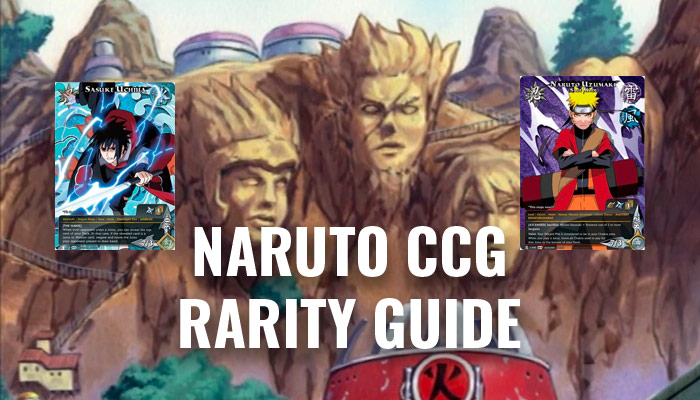The Naruto collectible card game was a card game created by Bandai that was published from 2006-2013 and was based on the shonen anime. With the game being out of print for so long, it can be kind of hard to figure out the rarity of cards if you’re just getting into the hobby.
This guide is for the official Bandai card game. For Kayou Naruto cards go to this article instead.
Table of Contents
How can you tell if a Naruto card is rare?
The dots at the bottom of each card denote the rarity. There are four main levels of rarity in the game.
Common
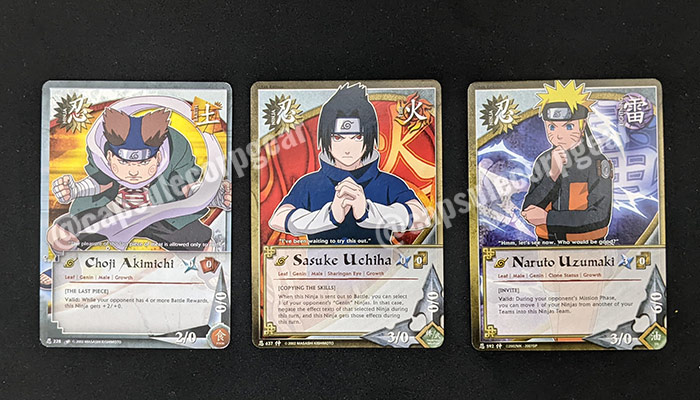
The easiest cards to pull out of booster packs. Common cards are denoted by having no dots at the bottom of the card.
Uncommon
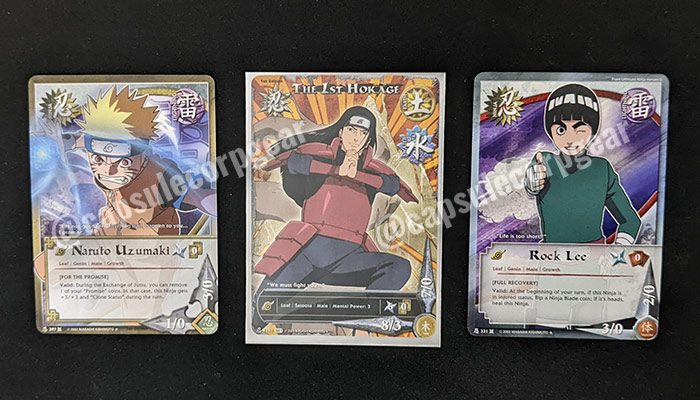
One dot means that a card is uncommon. Uncommon cards are only slightly more rare that common, but are still considered “bulk” cards.
Rare
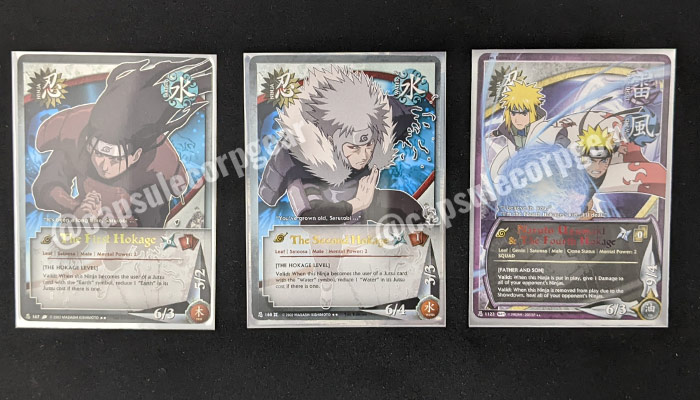
Two dots indicate that a card is rare. Rare cards also have gold or rainbow lettering on the name.
Super Rare
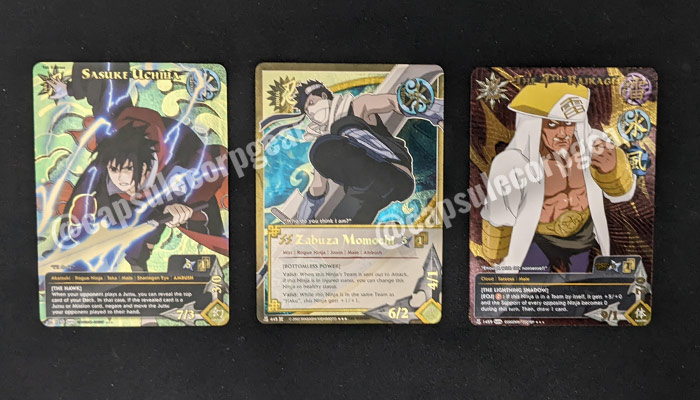
Three dots mean that a card is a super rare. Super rares have gold text and gold foiling on the card. These are the hardest regular cards to pull with about a 1/12 or 1/6 chance to pull from a booster pack depending on the set.
Starter Rare

If the dots are red instead of white that means that the card came from a premade starter deck. Since they came in decks, starter super rares, aren’t as rare as regular supers.
Where to Buy Bandai Naruto Cards
Disclosure: Please note that this site contains affiliate links, which means that if you make a purchase through one of these links, we may receive a small commission. Thank you for supporting!
The Bandai Naruto CCG was discontinued. It’s out of print but you can still find cards and packs for sale on eBay.
Foils
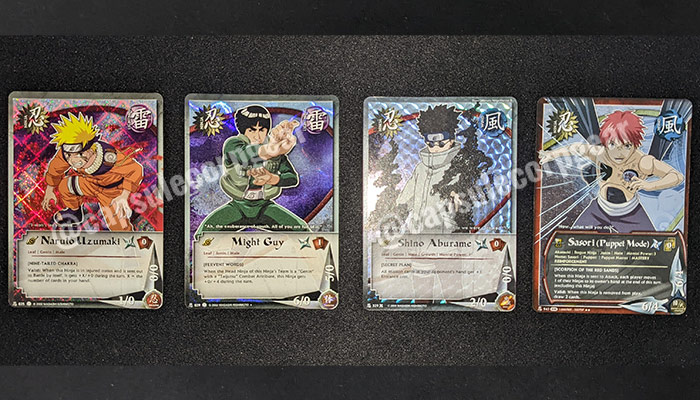
Common, uncommon, and rare cards can also come as foiled with the name of the card non-foiled. These are one per pack unless the pack contains a super rare, which takes the foil spot.
Diamond Foil vs Wavy Foil
In earlier sets of the game (set 1-9) foil card came in either diamond foil or wavy foil. Set 9 included a prism diamond checkered foil. Later sets used full foil.
